Monitoring - Why it Matters and How to Get Started
Do regenerative practices really work? Was that new product or new management tool worth it? Monitoring is key for helping us answer these questions and adapt our management to reach our goals.
After Photo of a Summer Prescribed Burn
“I sure wish I had taken before-photos!” Have you ever said that? I know I have. It’s such a simple thing, but far too often we jump into a project with good intentions, but we fail to monitor the progress. Maybe it’s tedious, but monitoring is one of the most important things you can do on your farm or ranch. Why does it matter?
Why Monitoring Matters
Monitoring provides proof of impact
Monitoring can tell us if we actually made a difference with that new practice or tool. It’s easy for us to see the changes ourselves, but what about our family, landlords, or a skeptical neighbor? Sometimes they need a little more proof. They weren’t lying when they said, “A picture is worth a thousand words.” Monitoring provides proof that we made a difference and helps guard against our own bias.
Monitoring keeps us on track
With monitoring, we can see if we’re on the right trajectory. It takes time to see some of the changes we’re after. Through monitoring, we can determine if we’re on the right path and make adjustments if needed. On the flip side, monitoring can alert us to downward trends and provide us with warning signs.
How to Get Started
Start with your goals
Yeah, I know, more tedious work! I’m sure you’ve heard that goals are important. If you struggle with goals, ask yourself: What do you want your land to look like next year, in the next 10 years, or when you pass it to the next generation? What do you want your business to look like? What do you want your quality of life to look like? Try to keep all three pieces in mind. You may catch yourself saying “Well, that’s not realistic.” If you do, ask yourself: Is that really true? We want our goals to be realistic, but we don’t want to limit ourselves. The most successful people in the world are not the smartest, or most talented. They’re simply the ones that challenged what was “unrealistic”.
2. Identify your major concerns
Once you have some goals, consider what’s stopping you from reaching them. What are your major resource concerns? You’ve probably already noticed these issues. Maybe it’s noxious weeds, erosion issues, maybe your business isn’t as profitable as it needs to be. Be sure to ask yourself “Are these really big issues, or do I just perceive them this way?” Once you’ve identified your major concerns you will have a better idea of what is most important to monitor.
3. Assess your resources
What tests and the frequency that you monitor will be dependent on what resources (money, people, time) you have available.
Money:
How much do you want to spend on monitoring? With all the tests and tools out there, it’s a good idea to set a budget. Remember, you don’t have to spend a lot of money here. Even just taking some good photos is a great place to start.
People:
Who will do the monitoring? Will it be you or a team? You don’t have to do it all yourself. It might be best to hire someone. If it’s not something you enjoy, or don’t feel you have time for, you won’t do it anyway. Don’t be afraid to delegate or hire things out.
Time:
How much time are you willing to invest in monitoring? Be realistic. There is no right or wrong answer to how often you should monitor. Consistency is key. The best monitoring plan is the one you will do consistently. For some, annual monitoring might be ideal, but for longer-term projects, like monitoring woody encroachment, every 3-5 years might be just fine.
3. Pick a Tool
This is probably the most overwhelming part because there are so many tools available. Be sure whatever tools or assessments you choose, they provide data you will actually use. Don’t get caught up chasing the next shiny test. If you don’t use the information, it’s not worth it! If you do no other monitoring, take good photos. Photos are the easiest and cheapest form of monitoring out there.
Common Monitoring Tools
There are countless tools out there, and it can be easy to get lost in what to use. Below is a table with some common monitoring tools. This is certainly not an exhaustive list. Remember, if you do nothing else, take photos!
If you do nothing else, take good photos! “Rastafarian roots” on cereal rye
Your Next Steps
Define your goals.
Choose a monitoring tool.
Decide who will monitor.
Decide how often to monitor
Use the data
Now go break that cycle! Don’t say “I wish I had…”. Before you try the next experiment, challenge yourself to use one monitoring tool - a photo, brix, whatever works for you. It doesn’t have to be perfect the first time you do it. Just get in the habitat to do one small thing and build on it over time.
Don’t stop at collecting data. Make sure you’re putting that information to use and capturing it in a way that works for you. Maybe that’s a spreadsheet or some printed photos in a notebook. Review the data and adapt your management to meet your goals.
If you still need help getting started drop us a line, or check out our monitoring guide – it’s free when you sign up for our monthly newsletter!




